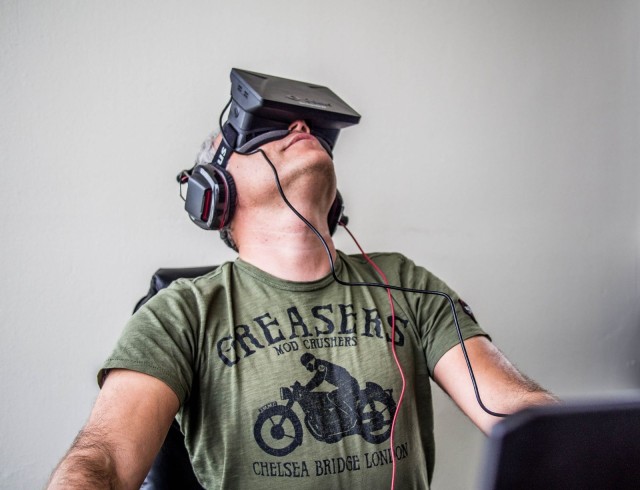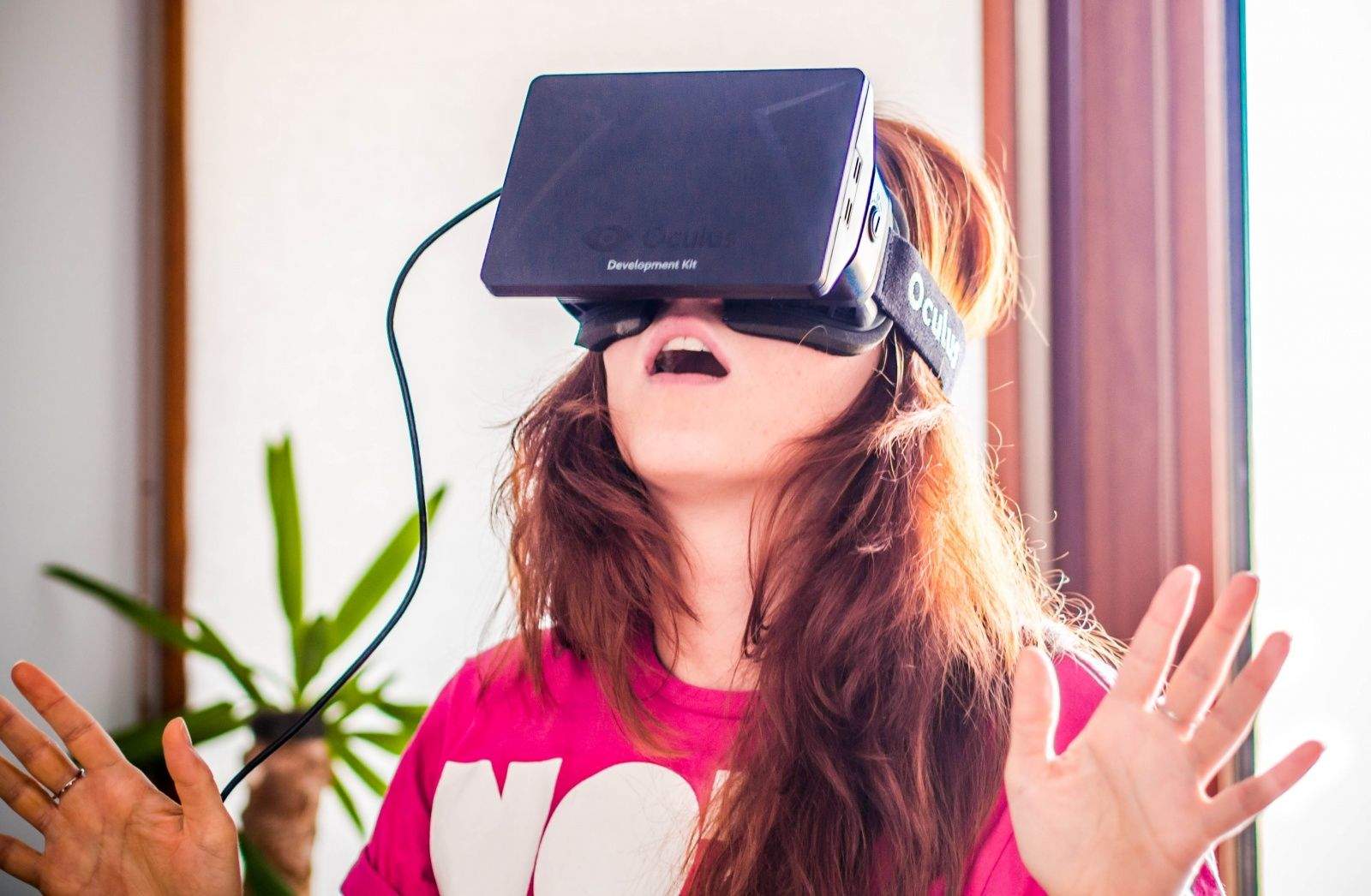When my kids and I walked into a coffee shop one sunny day last month, we were greeted by a row of tables holding laptops with gaming demos.
My son gravitated toward the biggest display, a huge TV screen with a giant, face-obscuring set of goggles set in front of it. This was the Oculus Rift, the latest fad gaming device that places two stereoscopic images in front of your eyes to simulate virtual reality.
He slid the massive black eyewear onto his face, picked up the connected Xbox controller, and started moving his head around. The rest of us could see the game on the TV — an abstract shooting gallery in three dimensions, with my boy at the center, first-person style.
After about five minutes of waving his head around and pressing buttons on the controller, my son pushed the goggles up and off his head and said, “Dad, I think I’m going to be sick.”
Indie fave Oculus made a lot of noise among game developers with Rift, the first truly workable virtual-reality goggles. The volume increased when Facebook acquired Oculus for $2 billion, an unheard-of sum for a gaming hardware company. Sony jumped into the fray with its own VR headset, Project Morpheus, at the Game Developers Conference in March. Hell, even Samsung is making a go of it.
The problem is that all these companies — and many more, judging by the flood of emails we’ve gotten about VR gaming at next week’s Electronic Entertainment Expo in Los Angeles — have poured billions of dollars into yet another gaming fad.
What makes gaming compelling isn’t necessarily the visual gimmickry you can throw into the mix. Sure, high-definition video makes current-generation gaming more compelling in some ways than the abstract pixel shapes of yesteryear’s arcade games, but that kind of upgrade only goes so far. Without innovative design, compelling storytelling and an unabashed concentration on fun, any new game — no matter how advanced the technology — is doomed to the dustbin of boring crap nobody wants to play. High-tech lipstick will not turn a digital pig into awesome entertainment.
After my son got sick of the Rift, I decided to try the headset myself. Sliding the heavy, view-obscuring goggles on was a little scary. (Who wants to block out their entire visual field? Not this guy!) But once I had them on, the game opened up before me. I stood inside a giant courtyard made of white square structures, with red hovering robots ready to attack. I truly felt like I was inside the game.
I had a moment of awe, and then I moved my head.
Things got blurry and nauseating pretty fast. The scenes changed a bit slower than my head moved — it was a little like being drunk, without the fun part. I can’t see myself sitting with one of these things on my face for hours of gaming. It’s just too weird.

Photo: Sergey Galyonkin/Wikipedia CC
As my son realized, virtual reality is just another fad, like motion controls and, to an even greater extent, 3-D gaming. The first brought Nintendo back into the spotlight with its Wii remote, and the second lasted all of a year. No one focuses on 3-D gaming any more, and even Microsoft concedes that its Kinect motion sensor — which some devs are using in tandem with the Rift to create “full-body VR” — will take up valuable processing power.
Virtual reality might be the future of gaming, but it’s not here now, and all the fancy headsets in the world aren’t going to make it a current-generation reality. It’s an exciting time for game makers who are exploring the outer limits of playability, but the technology hasn’t caught up to developers’ dreams.
Even uber-gamer Notch, creator of outrageously successful indie game Minecraft and a believer in virtual reality’s gleaming possibilities, sees that the technology is only a game-changer for the future. Virtual reality is not quite ready for prime time. (The Rift even made Notch nauseous.)
So, as companies both large and small head into the Electronic Entertainment Expo next week, fervently clutching their hopes and dreams in the form of VR helmets, headsets and the like, let’s pause a moment and remember where we really are.
This isn’t a realization of the virtual reality promised in the 1990s, where you would just “jack in” to the Internet and walk around data structures. Nor is it a recreation of Star Trek’s holodeck, a lifelike game filled with characters that act just like people.
What we’re going to see next week is the first baby steps toward a potential future in which we interact with video games in a more immersive manner. Nothing more, nothing less.
After his first experience with the Rift, my son took a few steadying breaths at a quiet coffee table. I went over to him, sat down and rubbed his back.
“Do you want to try that other game on the Rift?” I asked.
“Nah, I don’t think so,” he said, walking over to a different laptop to check out a fantasy MMO in development. We haven’t tried any VR goggles since.
Image: Sergey Galyonkin


